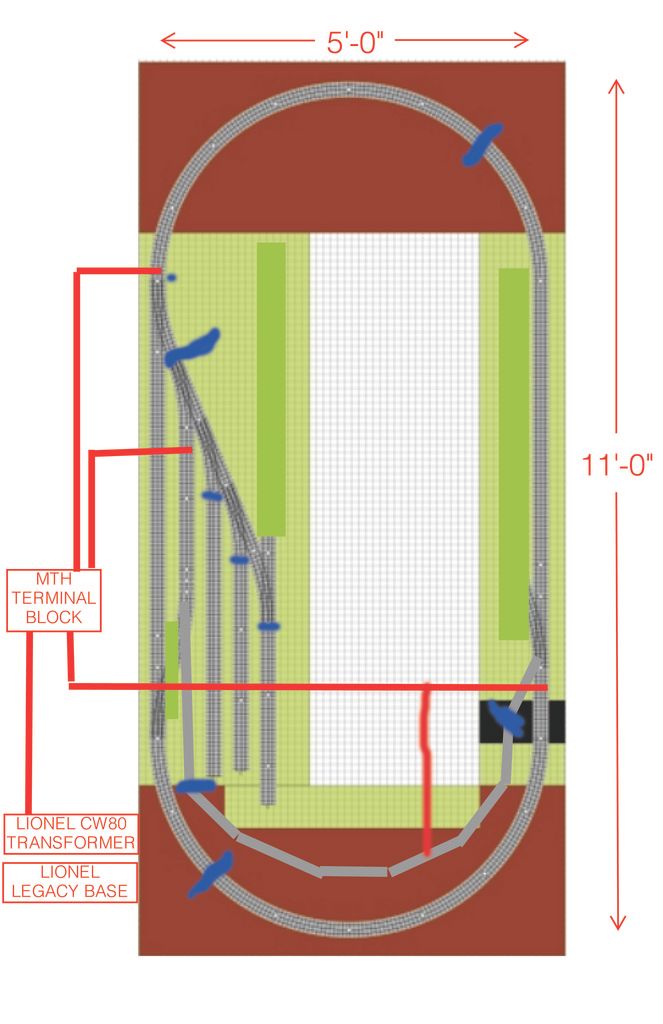So I'm working on wiring my small layout and I need some help. Currently I have 2 legacy equipped engines and I protosound 2 engine; I have a CAB1L remote and the DCS starter set from a MTH RTR set. I don't have the funds to currently purchase the full DCS setup but I'd like to wire my layout so that I can use my CAB1L remote now and when I have the $$ in the future purchase the full DCS setup and combine it with my legacy base to run everything using the DCS remote.
So is this possible? I've attached a proposed image of my layout with wiring overlayed. I appreciate any help and insight (sorry for the crude diagram, I made some last minute changes).
Thanks!





